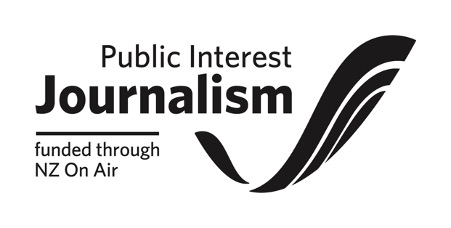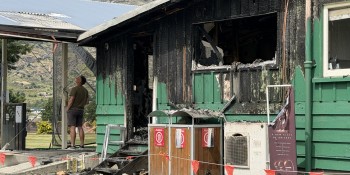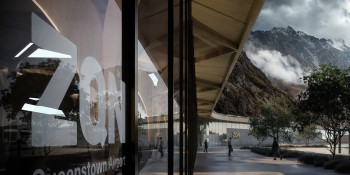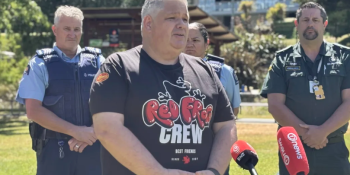Queenstown Airport says community backs $350m expansion

Queenstown Airport has this morning made public its report on community consultation on its draft 10-year master plan – along with all the public submissions that informed it in a bid to be "open and transparent".
More than 230 individuals and organisations took the opportunity to have a say, with airport chief executive Glen Sowry saying “there’s the full spectrum of perspectives” among “the telephone book thick pile” of responses.
But there was nothing to sway the airport from the direction it was heading – a $350-million staged spend on infrastructure to accommodate 800,000 extra passenger movements a year within 10 years.
“When we looked at all of the feedback, the majority of it was supportive of the balance that we're seeking to achieve, and the investments that we are proposing to make in the airport to ensure that it's an airport that the community is proud of and will serve the region for decades to come,” Mr Sowry says.
“That theme came through very strongly.”
The works schedule outlined in the master plan is based on accommodating what the airport calls “modest growth” – in real figures, 3.2 percent compounded annual growth in passenger numbers, which will equate to 3.2 million passenger movements a year by 2032, up from 2.4 million.
However some submitters challenged just how “modest” these growth projections were – the Kelvin Peninsula Community Association and the Frankton Community Association, representing a bulk of nearby residents to the airport, among them.
In its submission the Frankton Community Association says the airport’s master plan has “downplayed” 3.2 percent growth as modest.
“Without other constraints, this would result in a doubling of numbers in just 22 years. We object to the downplaying of growth.”
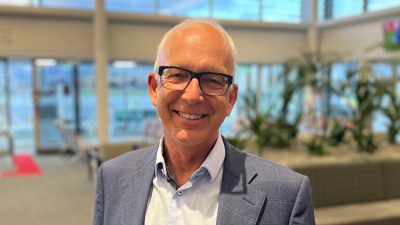
Queenstown Airport chief executive Glen Sowry says feedback from community consultation has largely endorsed his ten-year plan for the airport.
But Mr Sowry says some of the concerns raised about growth by submitters are beyond the airport’s remit.
“We respond to demand, and in some cases don’t meet it all. We’re not out there trying to create that demand.
“The development of residential housing, of hotel infrastructure, of Airbnbs, et cetera - those clearly are significant influences in the visitor economy.”
It is his view implementing mechanisms for controlling growth “are most appropriately decisions for the QLDC (Queenstown Lakes District Council) and others to make, and not the airport company”.
He says the feedback received during the master plan consultation process “made it clear that a much broader community conversation is necessary” on the subject.
Other submitters – including FlightPlan 2050, which thinks the airport should vacate its prime central Frankton spot to make way for fresh town centre development; Sustainable Tarras, a group of Tarras residents campaigning to keep Christchurch Airport at bay in their neck of the woods; and climate change academics – challenged the airport’s stated commitment to reducing greenhouse gases in the context of what they believe to be planned significant growth in aircraft movements.
Others again congratulated the airport on its proposed master plan initiatives to lead the way in facilitating innovative electric transport solutions for travel in the district beyond the terminal building, with some submitters providing thoughts on driverless electric vehicles to ferry new arrivals to accommodation, or luggage transfers to allow them to jump on a bike unimpeded by a suitcase.
Mr Sowry maintains his team, in working with the community and stakeholders, has struck the right balance to achieve sustainable growth.
“Just to put things into a bit of perspective, Queenstown Airport's runway is longer than Wellington Airport’s; our airfield is bigger than Wellington Airport, so our whole footprint, and Wellington Airport has passenger numbers of several multiples larger than Queenstown Airport that operate within that smaller footprint.
“The fact that we are operating with some level of constraint with the noise boundaries is in direct response to the direction and the guidance of our major shareholder - being QLDC and the community.
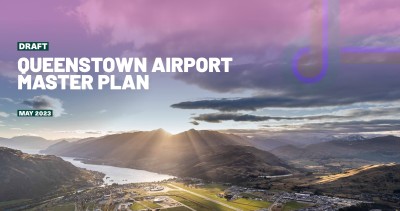
Community consultation was conducted in partnership with the Queenstown Lakes District Council between May and June.
“One could argue it is self-imposed, but we do so willingly, and we think it's the right thing to do for this region.”
Mr Sowry believes the airport has social licence, and that was made clear to him by a bulk of the submissions.
“One of the themes that came through really strongly...is how much the people of this region and visitors value this airport. It is a really significant enabler of the economy and the social well being of people who live here, being able to connect conveniently, to family, business and all the rest of it."
The master plan investments will set Queenstown Airport up to service the community - the visitor economy and the people who live here - well for "decades to come and in a way that this community will support", he says.
"We're really clear and comfortable about the fact we are not trying to build a long-haul, wide-body international airport to grow multiple times what we are today into the future. That is not what Queenstown Airport is or will be about."
Mr Sowry says there are also three other consented operating airports in the south, which still have "significant capacity" - Christchurch Airport among them.
Yesterday, Christchurch Airport released its latest research in support of its proposed new international airport for Central Otago, which instead claims there is not enough airport capacity in the south.
Queenstown Airport will now work with its shareholders to finalise its master plan. The latest draft version of the document can be found here, and the full engagement report is available here. All the feedback received through the consultation, which was run in partnership with the Queenstown Lakes District Council, is also now publicly available, with appropriate privacy protections in place.
Main image (Supplied): More terminal upgrades are included in Queenstown Airport's staged $350 million investment for growth in the next ten years.
Read more: Queenstown Airport $350m growth plan - 800,000 more passenger movements





